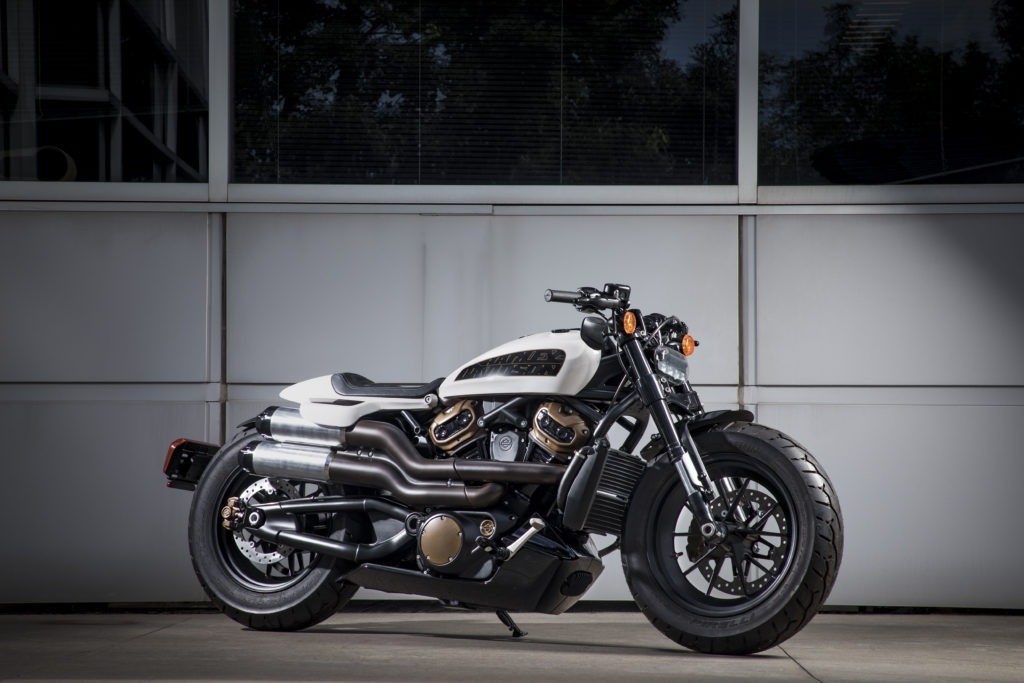
There’s something magical about riding open roads with a narrow-angle V-Twin pounding out the soundtrack to America from below. Whether Harley’s 45-degree Twin or Indian’s 49 in the Thunderstroke, there’s a unique cadence to an engine with two cylinders placed tightly to each other. They lope along like a faithful horse, connecting to their jockey in an almost organic way.
Horses for courses, it is said. And so now we also ride V-Twins with 60-degree vee angles, like Indian’s Scout and FTR, as well as Harley’s new Pan America seen on this issue’s cover. Why 60 degrees? Largely because it’s wide enough to accommodate a freer-flowing intake system for greater performance, yet it’s shorter front to back than wider vee angles, easing packaging within a chassis.
Is 60 degrees preferable? Well, it kinda depends on who’s asking.
The Motor Company didn’t spend millions developing the high-tech Revolution Max 1250 just for the Pan America. Any clean-sheet motorcycle engine will find its way into at least a few models, if not several. Harley has said the new engines were “created to power a range of new Harley-Davidson models.”
“This (V-Twin) lineage continues into the middleweight performance space with the Revolution Max engine,” H-D said when unveiling the Bronx prototype in late 2019. This sporty 975cc streetfighter-style machine with more than 115 horsepower has since been delayed from its intended 2021 launch, or canceled, but it will certainly make its way into something similar.

H-D has also revealed a Custom 1250, above, which looks to be a similar platform as the Bronx but fitted with an upswept exhaust and fatter tires. Early this year H-D said it was “planned for 2021.”
So, like it or not, we’re going to be seeing a lot more liquid-cooled and double-overhead-cammed V-Twins in Harley dealerships. If the MoCo follows through on previously announced plans, we’ll see versions of the RevMax in 500cc and 750cc versions, in addition to the 975 and 1250.
As appealing as these new models might be, their engines won’t be nearly as pretty as an air-cooled 45-degree V-Twin like the ones used in Sportsters and, well, any Harley motor with more than 750cc.
Strict H-D traditionalists will bemoan this modern-focused evolution, rebelling against any Harley with a radiator. Some MoCo loyalists will understand this as a move toward long-term sustainability, as long as the existing FLs and Softails remain available. Meanwhile, these new machines will hold a wider appeal to riders not already in the Harley community, as seen on page 24 in our Pan America review.
So, how about you? Could one of these liquid-cooled 60-degree Harleys find a spot in your garage? Does an adventure-touring H-D provide an appealing alternative to what you ride, or do you see it as distracting from the MoCo’s core mission?
The answers to these questions might, at this point, be moot to Harley, which is already committed to market expansion with these new bikes. But we’re interested in hearing what Thunder Press readers have to say about them.
Stay tuned for a fresh reader’s survey in which we’ll delve into these and other topics to determine where your heads are at. Please fill out the survey when you see it so we can learn more about your interests and craft Thunder Press so that the content we deliver meets your expectations.
The motorcycle world is evolving. Looking forward to learning from you how we should evolve with it. In the meantime, I’m going to take a ride on a 45-degree V-Twin to remind myself of the sweet soul inherent in this outmoded but oh-so-satisfying design.


















